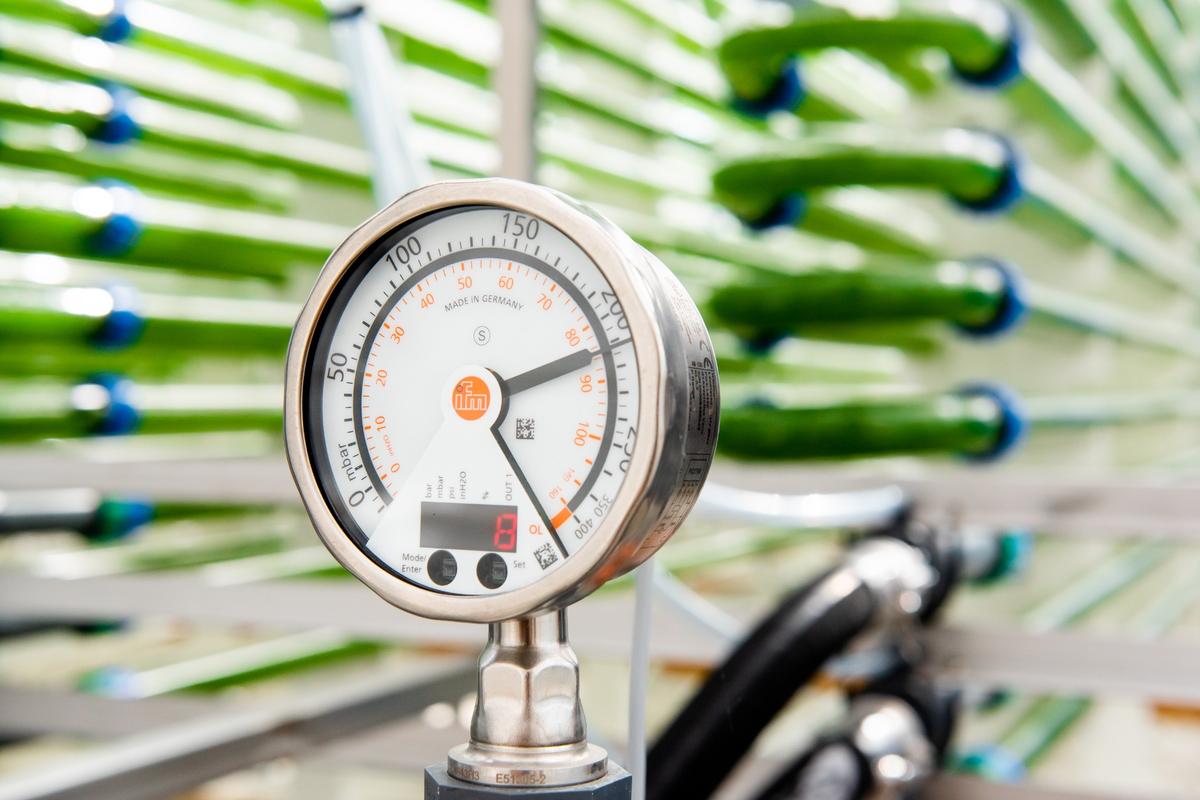
Scaling algae cultivation from laboratory conditions to industrial production scale is a complex process that requires careful consideration of biological, technical, and operational factors. This guide provides practical insights into scaling with Lgem’s photobioreactors (PBRs), addressing common challenges and strategies to ensure efficient and stable production at larger scales.
1. Key steps in transitioning from lab-scale to pilot-scale to industrial-scale cultivation
Environmental control variations
Lab environments offer high control over culture conditions such as temperature, pH, and light and nutrient availability. Scaling up introduces environmental variability, especially in outdoor systems subject to seasonal and daily variations. To mitigate this, indoor systems can replicate controlled lab conditions more effectively. Fully indoor cultivation can also be economically feasible, provided electricity prices remain below €0.15 per kWh
Impact of system size on circulation and light distribution
As system size increases, circulation times extend significantly—ranging from 6 to 12 minutes in Lab-25 systems, 12 to 30 minutes in pilot setups, and up to 20 to 40 minutes in full-scale industrial systems. The increased circulation times affect nutrient uptake and gas exchange throughout the helix. In addition, at Lgem, tube diameters increase from 32 mm (OD) at lab scale to 65 mm (OD) at pilot and industrial scale, altering light penetration and requiring recalibration of the applied light intensity to maintain the same productivity.
Equipment and automation differences
Both lab scale and larger systems benefit from automated controls for temperature, pH, and nutrient dosing. Lgem PBRs, equipped with advanced sensors and automated control systems, enhance process stability and reduce operator workload.
Metrics for scaling decisions
Key parameters to assess before scaling include maximum achievable biomass productivity and biomass yield on light, nutrient uptake rates, and light utilization efficiency. Validating these metrics ensures predictable outcomes when scaling up.
Strain selection and genetic stability
Selecting algae strains that thrive under industrially relevant conditions is essential for the success of the business case. Strains must tolerate temperature variations, changes in light intensity, particularly under sunlight, and maintain genetic stability to avoid productivity losses.
“Our modular design allows us to grow from lab to industry without reinventing processes; we scale smart, not just large.”
Jeroen de Vree
Lead Sales Engineer
2. Algae cultivation, common mistakes during scale-up and how to avoid them
Time management oversights
Large-scale operation requires adequate operational planning, as increased volumes mean that preparation efforts such as media make-up can take significantly more time. The time required for this can be reduced by applying cultivation media recycling, although this must first be validated at lab or pilot scale.
Algae cultivation: Overcrowding and Self-Shading
In Lgem PBRs used for Algae cultivation, the volumetric light supply rate remains consistent across scales, which means similar volumetric productivities can be achieved. Because the tubes are not completely filled and mixing is turbulent, self-shading plays a less prominent role compared to fully filled systems.
Contamination risks
Larger systems present more surfaces for potential contamination. A hygienic reactor design is therefore essential and supports the implementation of comprehensive cleaning protocols (CIP procedures), which typically involve alkaline, acidic, and disinfectant phases to maintain culture purity.
CO₂, nutrient, and light management failures
Accurate monitoring and timely nutrient addition are crucial for maintaining high biomass yields. Automated operation in Lgem systems enables cultivation around the sweet spot for both maximal biomass productivity and optimal light utilisation. Risks of limitations in other key nutrients, such as CO₂, are mitigated through the Lgem operational concept.
Inadequate mixing and circulation
Proper mixing prevents sedimentation and ensures uniform nutrient and light distribution. Lgem’s plug flow systems are designed with consistent circulation times across scales from the Pilot-925 and up, specifically to avoid discrepancies in operation and performance. Although the circulation time is relatively long compared to other system types, it remains constant as scale increases.

3. How Lgem adapts its PBRs to handle increased complexity
Optimized design
Lgem PBRs are modular, allowing seamless scaling while maintaining similar hydrodynamic properties. Larger systems feature increased tube diameters and adjustable culture volumes.
Structural integrity and durability
Industrial-scale PBRs are built using robust materials and validated design concepts, reducing operational stresses to a minimum. Modular construction facilitates easier transportation and installation, and supports smoother scaling for operations teams, as the systems are similar or identical across scales.
Automated monitoring and environmental control
Lgem systems are highly automated, reducing the need for skilled labour in day-to-day operations. They integrate temperature, pH, and light sensors with advanced control loops, and are designed for seamless integration with upstream and downstream unit operations to support a stable and robust automated production process. Further developments in areas such as nutrient sensing and AI-driven predictive models are currently under investigation.
Automation isn’t a luxury—it’s a necessity: with real-time pH, temperature, and nutrient control, we minimize human variability and maximize continuity.
Marta Batista de Sá
Lead of AlgaeHub
4. Technical challenges in maintaining stability at larger scales
pH and temperature regulation
Larger volumes slow temperature adjustments and pH corrections. Lgem systems address this through an optimised CO₂ injection point and by aligning cooling requirements with external installations.
Algae cultivation: Oxygen Buildup and Gas Exchange
In Lgem PBRs used for Algae cultivation, longer circulation times can limit CO₂ supply to and oxygen removal from the culture. Lgem’s proprietary two-phase system provides gas exchange throughout the helix, reducing risks of CO₂ limitation and oxygen buildup.
Harvesting and replenishment cycles
Balancing harvest frequency and harvest volume with culture regrowth is vital. Optimal rates must be determined experimentally and depend on application product of interest.
Preventing sedimentation and uneven nutrient distribution
Effective circulation designs in Lgem PBRs reduces cell settling, ensuring consistent exposure to nutrients and light.
Conclusion
Scaling algae cultivation demands careful consideration of biological requirements, equipment adjustments, and operational strategies. Lgem’s PBRs provide scalable, automated solutions that address these complexities, enabling efficient transitions from laboratory research to industrial production.
Scaling algae cultivation from the lab to industrial production involves technical, biological, and operational challenges. This concise guide outlines key considerations for efficient scale-up using Lgem PBRs.